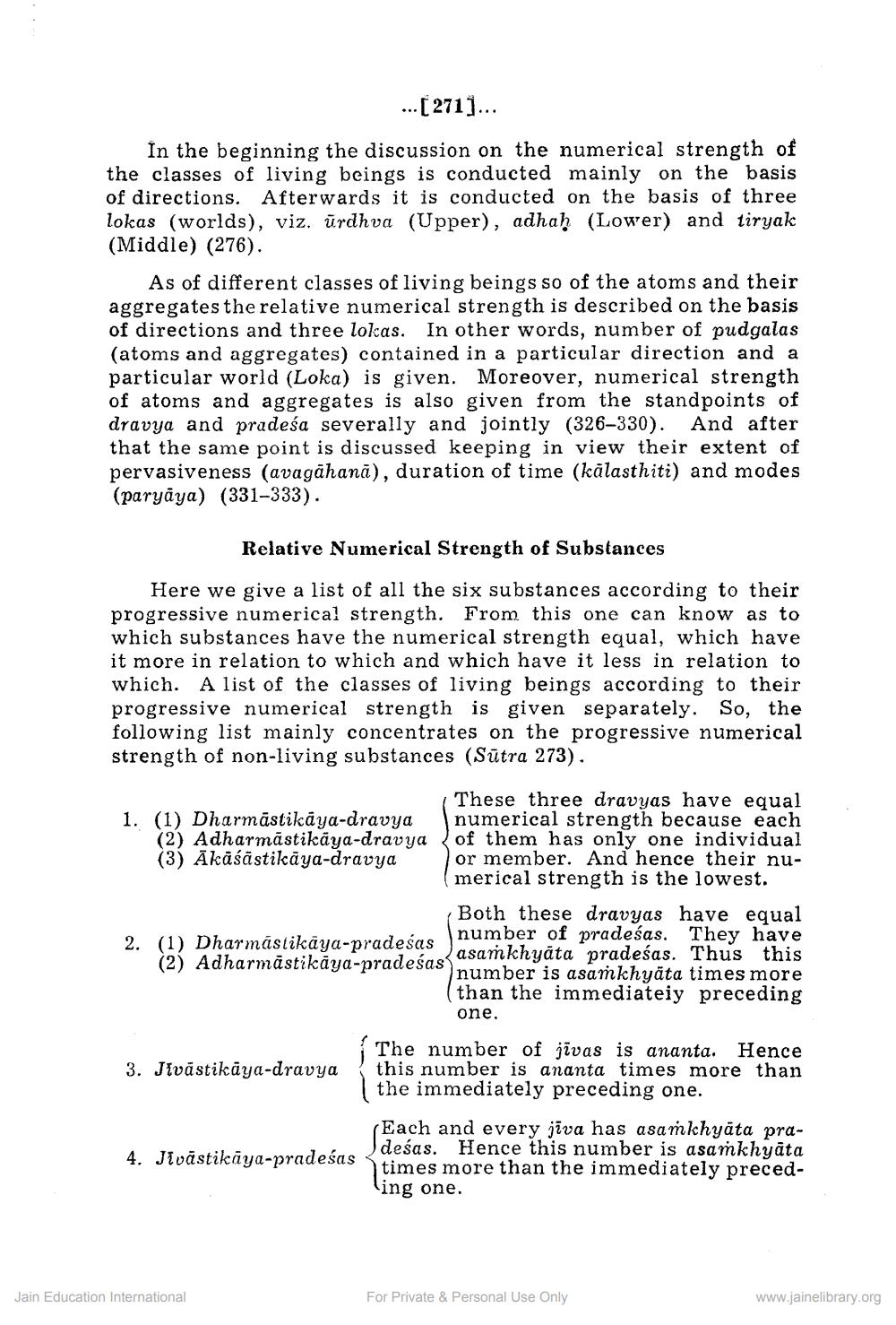________________
... [ 271]. In the beginning the discussion on the numerical strength of the classes of living beings is conducted mainly on the basis of directions. Afterwards it is conducted on the basis of three lokas (worlds), viz. ürdhva (Upper), adhah (Lower) and tiryak (Middle) (276).
As of different classes of living beings so of the atoms and their aggregates the relative numerical strength is described on the basis of directions and three lokas. In other words, number of pudgalas (atoms and aggregates) contained in a particular direction and a particular world (Loka) is given. Moreover, numerical strength of atoms and aggregates is also given from the standpoints of dravya and pradeśa severally and jointly (326-330). And after that the same point is discussed keeping in view their extent of pervasiveness (avagahanā), duration of time (kālasthiti) and modes (paryāya) (331-333).
Relative Numerical Strength of Substances
Here we give a list of all the six substances according to their progressive numerical strength. From this one can know as to which substances have the numerical strength equal, which have it more in relation to which and which have it less in relation to which. A list of the classes of living beings according to their progressive numerical strength is given separately. So, the following list mainly concentrates on the progressive numerical strength of non-living substances (Sūtra 273).
These three dravyas have equal 1. (1) Dharmāstikāya-dravya numerical strength because each
(2) Adharmāstikāya-dravya of them has only one individual (3) Ākāśāstikāya-dravya or member. And hence their nu
(merical strength is the lowest.
Both these dravyas have equal 2. (1) Dharmastikāya-pradesas
number of pradeśas. They have (2) Adharmāstikāya-pradeśas
asamkhyāta pradeśas. Thus this number is asaṁkhyāta times more (than the immediateiy preceding one.
The number of jīvas is ananta. Hence 3. Jivāstikāya-dravyathis number is ananta times more than
| the immediately preceding one.
4. Jivästikāya-pradeśas
Each and every jiva has asankhyāta pradeśas. Hence this number is asamkhyāta times more than the immediately precedling one.
Jain Education International
For Private & Personal Use Only
www.jainelibrary.org




